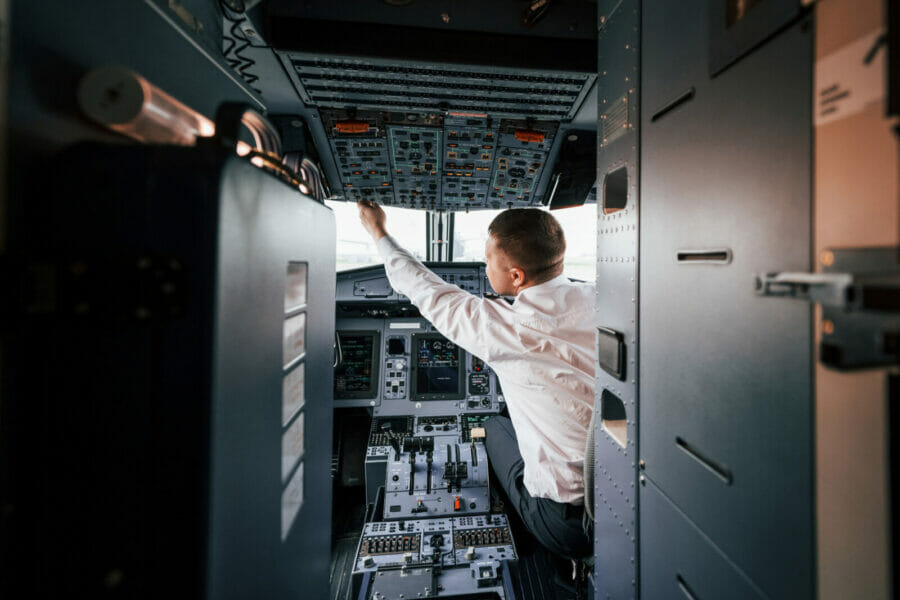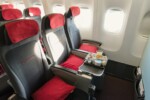How do You Compliment a Pilot on a Good Landing?
10 November 2023 | Updated on February 05, 2024
Pilots put their skills to the test every time they land an aircraft, and a compliment on a good landing can go a long way in showing appreciation for their hard work. Whether you’re a passenger or a flight attendant, a simple word of praise can brighten a pilot’s day and acknowledge their expertise. While pilots may joke amongst themselves about landings, genuine compliments provide validation and encouragement, highlighting their ability to safely bring the aircraft to the ground.
So, how can you compliment a pilot on a good landing? It can be as straightforward as saying, “Nice landing!” or expressing your appreciation for a smooth and controlled touchdown. Remember that pilots care deeply about their landings, as it showcases their skill in safely operating the aircraft. Your kind words can make a difference and show your gratitude for their efforts.

Key Takeaways:
- Complimenting a pilot on a good landing can brighten their day and provide validation for their skills.
- A simple “Nice landing!” or expressing appreciation for a smooth and controlled touchdown can go a long way.
- Recognize that pilots care deeply about their landings as it showcases their ability to safely bring the aircraft to the ground.
Boosting Crew Morale with Small Gestures
In the fast-paced world of aviation, where teamwork and camaraderie are essential, small gestures can go a long way in boosting crew morale. Pilots and flight attendants often find ways to show appreciation for each other, fostering a sense of community and support.
One such way is through the simple act of gifting chocolates or treats. Off-duty crew members and frequent fliers understand the power of these small gestures and their ability to bring a smile to their colleagues’ faces. A box of chocolates or a bag of homemade treats shared among the crew can create a moment of joy and connection, reminding everyone that they are part of a tight-knit aviation community.
These acts of kindness not only create a positive work environment but also strengthen the bond within the industry. The aviation community understands the challenges and demands of the job, and these small gestures serve as reminders that they are all in it together. By taking a moment to show appreciation for their fellow crew members, pilots and flight attendants build a supportive network that contributes to their overall morale and well-being.
So, the next time you find yourself in the aviation world, consider the power of small gestures. Whether it’s a box of chocolates, a batch of homemade treats, or a heartfelt note, these acts of kindness can brighten the day of your fellow crew members and strengthen the sense of camaraderie that makes the aviation community truly special.
The Importance of the “Go Home Leg”
The “go home leg” is a term used in the aviation industry to describe the final flight of a trip sequence for pilots. This leg holds a special significance as it marks the pilots’ return home after being away for multiple days. It is a moment of relief and celebration, signaling the end of a trip and the opportunity to reunite with loved ones.
For pilots and flight attendants, the go-home leg is not only about personal satisfaction but also about punctuality. Being on time for this final flight is crucial for several reasons. Firstly, it allows the crew to complete their work and ensure a smooth transition to their time off. Secondly, for commuting crew members, prompt arrival on the go-home leg is essential to make their travel arrangements and avoid additional expenses. A delayed flight could result in missed connections or extra costs, creating unnecessary stress.
Moreover, the importance of being on time for the go-home leg extends beyond the personal convenience of the crew. It directly impacts the overall efficiency of airline operations. When the inbound aircraft arrives on time, it enables the crew to depart as scheduled for their next assignment. This keeps the trip sequence intact and minimizes any waiting time for pilots and cabin crew, ensuring a seamless transition to the next day’s schedule. Prompt arrival on the go-home leg not only maintains the crew’s morale but also contributes to the overall punctuality of flights.

The Importance of Being On Time
Being on time for the go-home leg sets a positive tone and mood among the crew. It allows them to conclude their trip on a high note and enjoy the well-deserved time off. Additionally, promptness on the go-home leg reduces the risk of disruptions to the next day’s flight operations, ensuring a smooth start for the next crew.
In conclusion, the go-home leg holds a special significance for pilots and flight attendants. It represents the final flight of a trip sequence and marks their return home after being away for multiple days. Punctuality on the go-home leg is crucial for personal convenience, efficient airline operations, and maintaining crew morale. By understanding the importance of the go-home leg, passengers can appreciate the efforts of pilots and cabin crew in making their journeys safe and enjoyable.





























